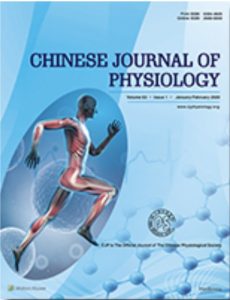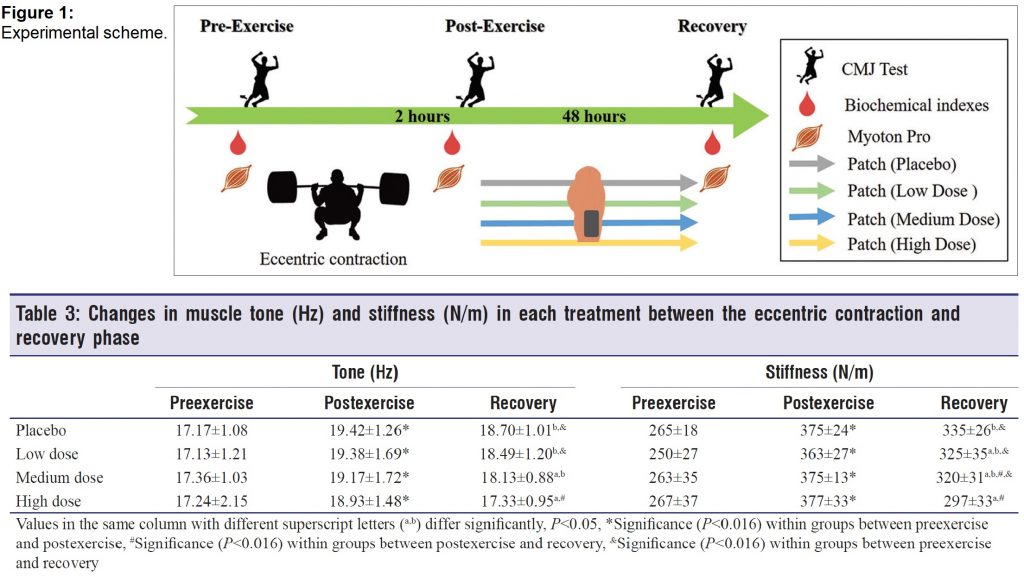Publications

Beneficial Effects of a Negative Ion Patch on Eccentric Exercise‑Induced Muscle Damage, Inflammation, and Exercise Performance in Badminton Athletes
Authors: Chin‑Shan Ho 1, Mon‑Chien Lee 1, Chi‑Yao Chang 1, Wen‑Chyuan Chen 2,3, Wen‑Ching Huang 4
Affiliations:
- Graduate Institute of Sports Science, National Taiwan Sport University, Taoyuan, Taiwan
- Center for General Education, Chang Gung University of Science and Technology, Taoyuan, Taiwan
- Department of Otorhinolaryngology, Head and Neck Surgery, Sleep Center, Linkou‑Chang Gung Memorial Hospital, Taoyuan, Taiwan
- Department of Exercise and Health Science, National Taipei University of Nursing and Health Sciences, Taipei, Taiwan
Journal: Chinese Journal of Physiology - February 2020, Volume 63, Issue 1 (DOI: 10.4103/CJP.CJP_33_19)
-
Field & Applications:
- Injury prevention
- Sport
- Warm-up / Recovery
Complementary and alternative medicines (CAMs) are widely applied and accepted for therapeutic purposes because of their numerous benefits. Negative ion treatment belongs to one of the critical categories defined by the National Center for CAM, with such treatment capable of air purification and ameliorating emotional disorders (e.g., depression and seasonal affective disorder). Negative ions can be produced naturally and also by a material with activated energy. Exercise‑induced muscle damage (EIMD) often occurs due to inadequate warm up, high‑intensity exercise, overload, and inappropriate posture, especially for high‑intensive competition.
Few studies have investigated the effects of negative ion treatment on muscular injury in the sports science field. In the current study, we enrolled badminton athletes and induced muscle damage in them through eccentric exercise in the form of a high‑intensity squat program.
We evaluated the effects of negative ion patches of different intensities at three points (preexercise, postexercise, and recovery) by analyzing physiological indexes (tumor necrosis factor [TNF]‑α, interleukin [IL]‑6, IL‑10, creatine kinase [CK], and lactate dehydrogenase [LDH] levels) and performing a functional assessment (a countermovement jump [CMJ] test).
We found that a high‑intensity negative ion patch could significantly reduce the levels of TNF‑α, an injury‑associated inflammatory cytokine, and related markers (CK and LDH). In addition, muscular overload‑caused fatigue could be also ameliorated, as indicated by the functional CMJ test result, and related muscular characteristics (tone and stiffness) could be effectively improved. Thus, the negative ion treatment could effectively improve physiological adaption and muscular fatigue recovery after EIMD in the current study.
The negative ion patch treatment can be further integrated into a taping system to synergistically fulfill exercise‑induced damage protection and functional elevation. However, the effects of this treatment require further experimental validation.
Keywords: Alternative medicine, countermovement jump, exercise injury, inflammation, negative ion

Exercise is a form of preventive medicine and is beneficial for health promotion. Thus, the number of people who exercise regularly has been increasing, and related products, including sport equipment, assistive devices, and nutritional supplements, are being developed to support the growing market. Based on the findings of the current evidence‑based study, the negative ion patch treatment can be a potential option for muscular fatigue recovery and physiological adaption. We also argue that negative ion application can be used as an alternative option for therapeutic/preventive strategies in the field of sports science.


